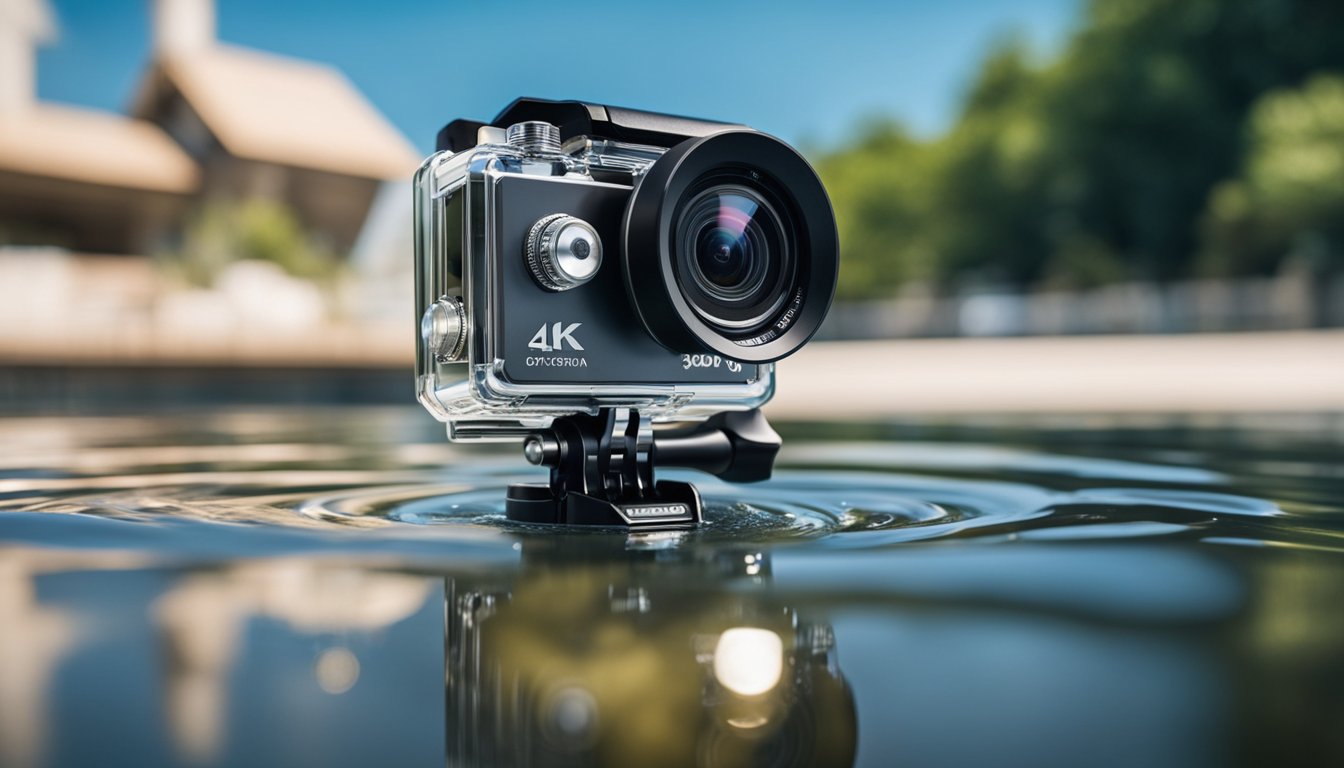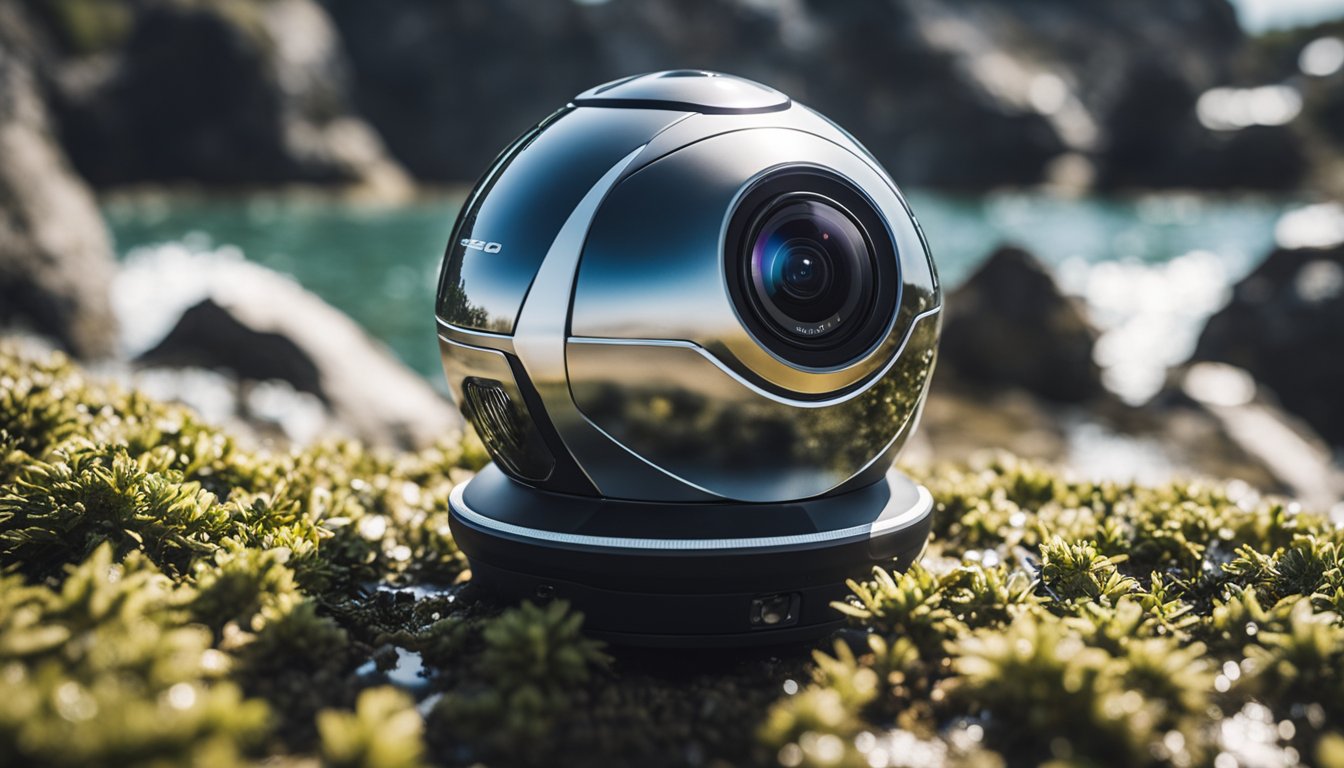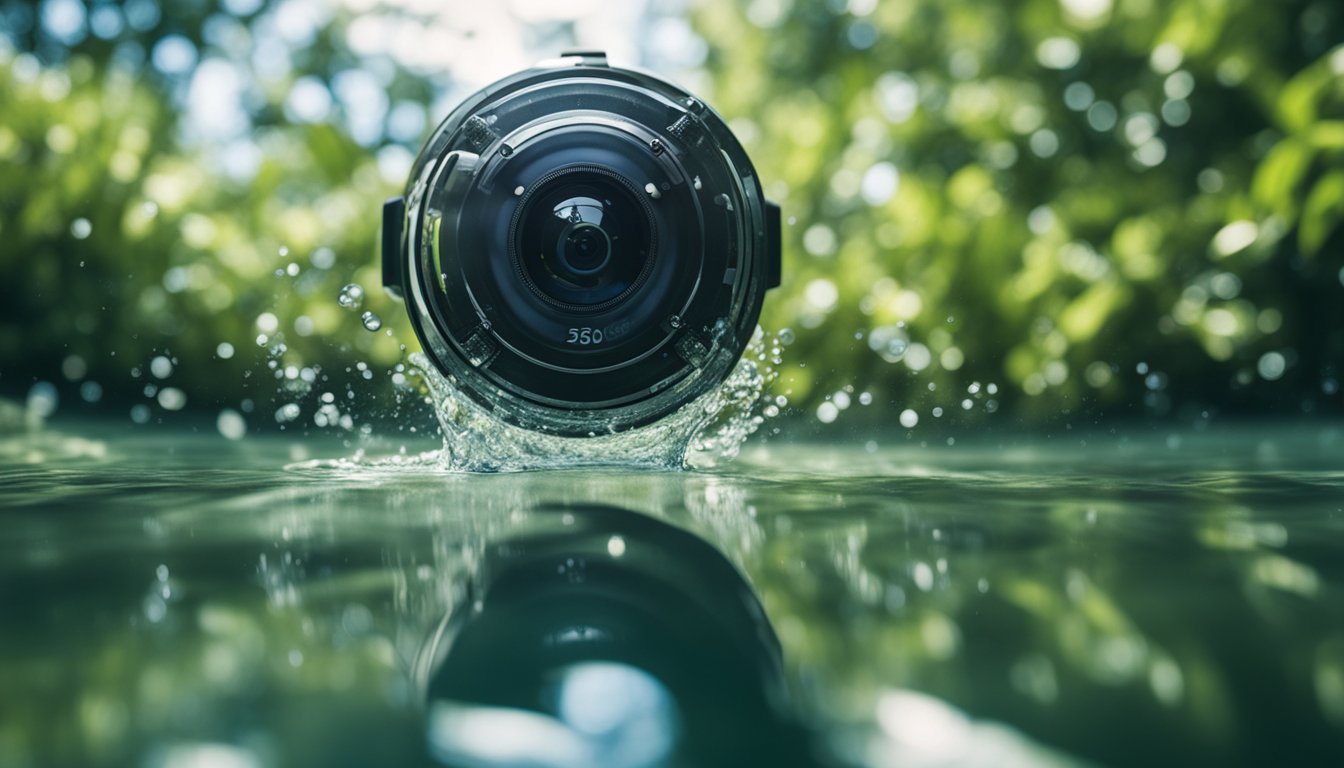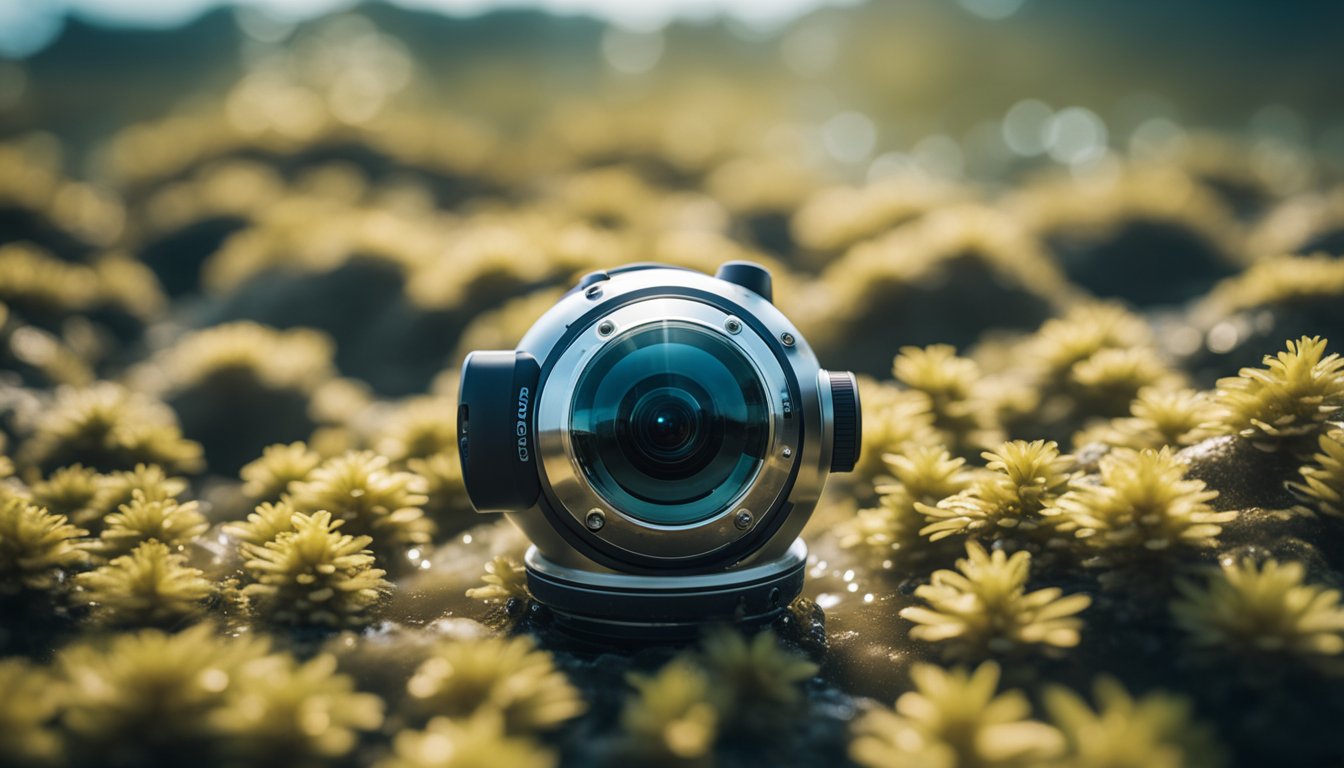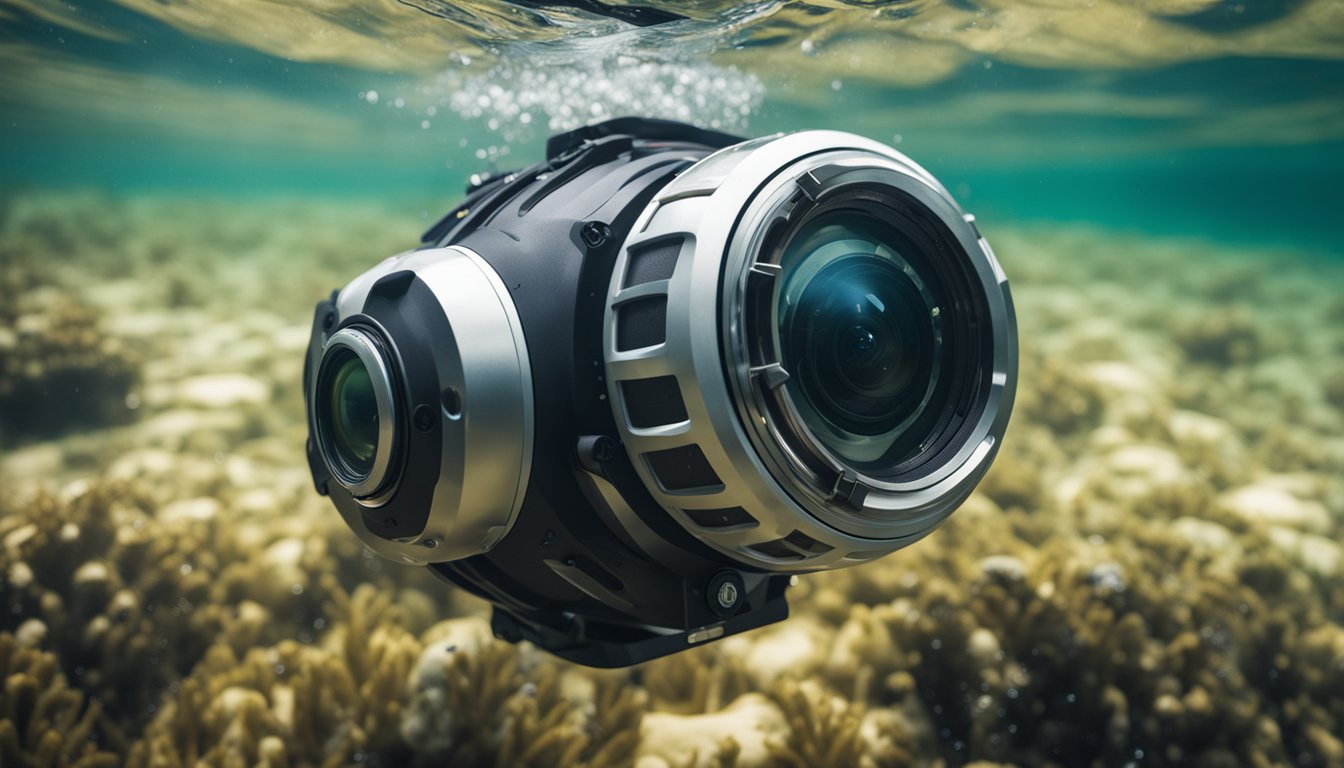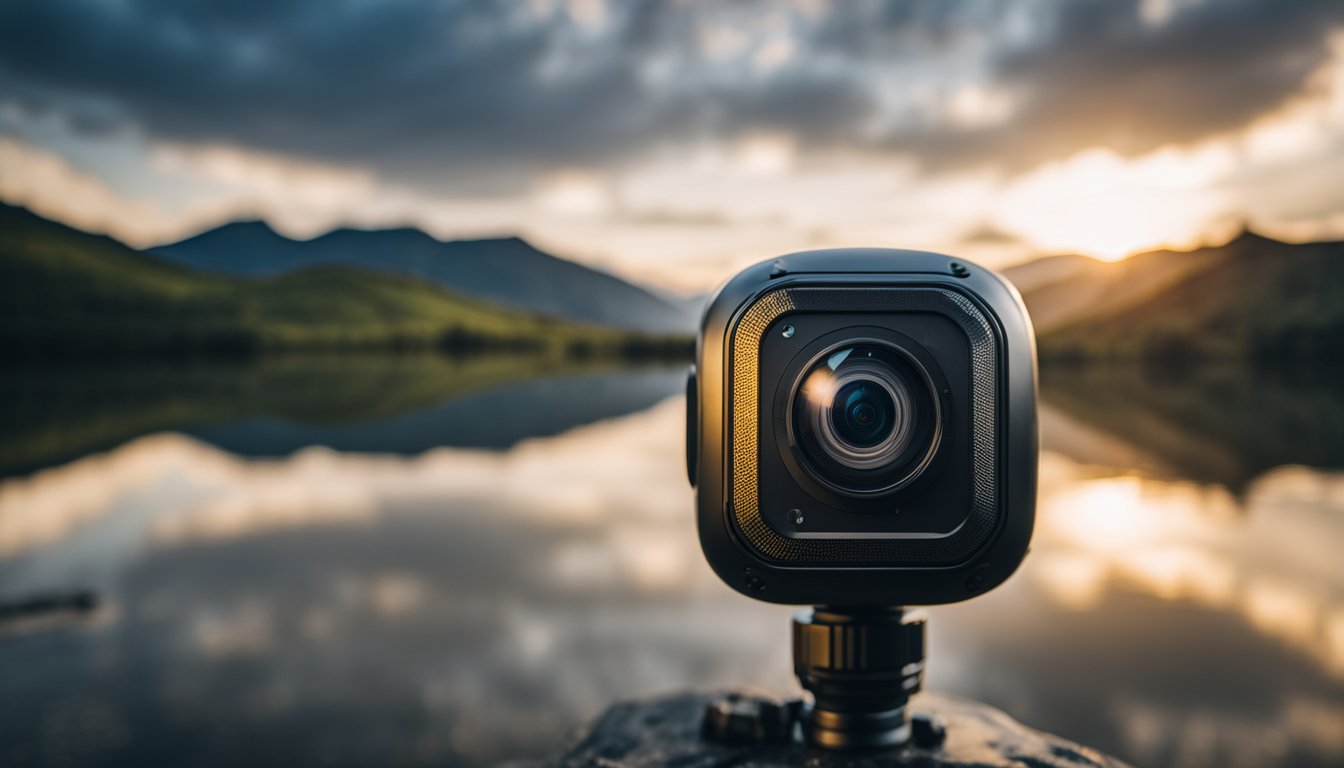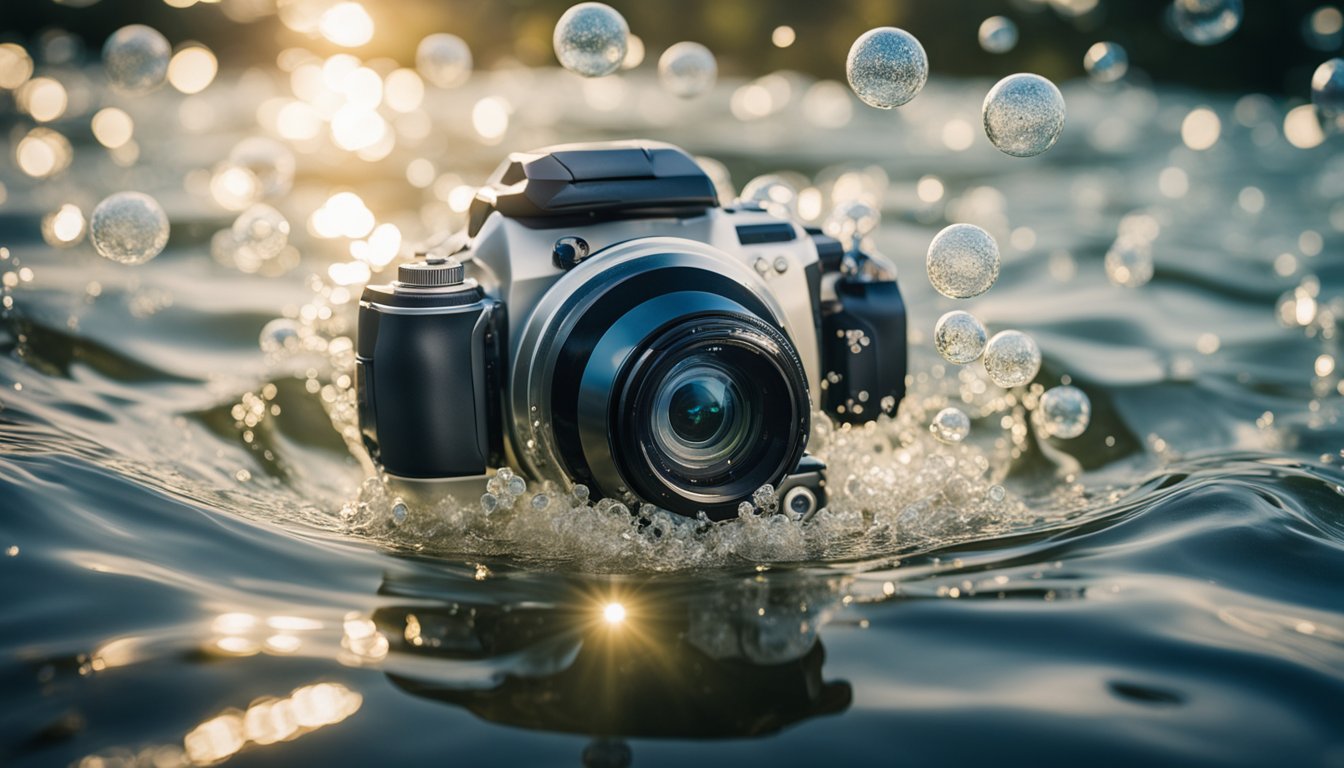If you’re an adventurous photographer or videographer, you might be wondering if a 360 camera is waterproof. These cameras are designed to capture immersive footage from every angle, even in challenging environments. However, not all 360 cameras are created equal, and some may not be suitable for use in water or other wet conditions. In this article, we’ll explore the waterproof features of 360 cameras and help you determine if they’re right for your needs.
A 360 camera is a camera that can capture images and video in a full 360-degree field of view, allowing you to see everything around you. These cameras are often used for immersive experiences, virtual reality, and other creative applications. While most 360 cameras are not specifically designed to be waterproof, many of them do have some degree of water resistance or protection. Some cameras are fully waterproof and can be used underwater, while others may only be splash-proof or resistant to light rain.
Key Takeaways
- Not all 360 cameras are waterproof, so it’s important to check the manufacturer’s specifications before using them in wet conditions.
- Some 360 cameras are fully waterproof and can be used underwater, while others may only be splash-proof or resistant to light rain.
- If you plan to use your 360 camera in water or other wet conditions, make sure to take appropriate precautions and use any recommended accessories or gear.
What Is a 360 Camera?
Are you curious about 360 cameras and how they work? Well, a 360 camera is a device that captures everything around it simultaneously. It has two lenses, one facing forward and the other facing backward, which allows it to capture a 360-degree view of the surroundings.
Exploring 360° Capture
360 cameras capture images and videos in a spherical format, which means you can see everything around you, including above and below. The camera lens captures the entire view, and the resulting image or video can be viewed from any angle. This feature makes 360 cameras perfect for capturing immersive experiences like virtual tours, sports events, concerts, and more.
Understanding 360 Videos
360 videos are videos that are captured using a 360 camera, and they offer a unique viewing experience. When you watch a 360 video, you can look around in any direction, as if you were actually there. They’re perfect for capturing action-packed moments like skiing, surfing, or skydiving.

When it comes to resolution, 360 cameras can capture footage in different resolutions, ranging from 2K to 8K. Higher resolution cameras capture more detail, which makes the footage look more realistic.
So, is the 360 camera waterproof? Well, some 360 cameras are waterproof, while others are not. If you’re planning to use your 360 camera for water sports or other activities that involve water, it’s essential to check if the camera is waterproof. Some popular waterproof 360 cameras include the Insta360 One X2 and the Insta360 One R.
In conclusion, 360 cameras are an excellent choice for capturing immersive experiences, and they offer a unique viewing experience. When choosing a 360 camera, it’s essential to consider factors such as resolution, waterproofing, and other features that will suit your needs.
Waterproof Features of 360 Cameras
https://www.youtube.com/watch?v=Hn99TLhLYv8&embed=true
If you’re an adrenaline junkie, or just someone who enjoys aquatic activities, you might be wondering if 360 cameras are waterproof. In this section, we’ll take a closer look at the waterproof features of 360 cameras.
IPX8 Waterproof Standard
« What Does 360 Camera Mean: A Beginner’s Guide
Does Ring Make a 360 Camera? Exploring Ring’s Camera Options »
Most 360 cameras today come with an IPX8 waterproof rating, which means they can be submerged in water up to 10 meters deep for up to 60 minutes without suffering any damage. This makes them perfect for capturing footage while swimming, snorkeling, or even diving. However, it’s important to note that the IPX8 rating doesn’t mean the camera is dustproof or shockproof, so it’s important to handle it with care.
Dive Case Essentials
If you’re planning on taking your 360 camera deeper than 10 meters, you’ll need a dive case. These cases are designed to protect your camera from water pressure and allow you to take it to greater depths. Some dive cases also come with additional features, such as filters or handles, which can help you get the perfect shot.
When choosing a dive case, it’s important to make sure it’s compatible with your camera model. Some manufacturers offer their own branded dive cases, while others have third-party options available. Make sure to read reviews and check the specifications before making a purchase.
In conclusion, 360 cameras can be a great tool for capturing your underwater adventures. With an IPX8 waterproof rating and the right dive case, you can take your camera to depths of up to 10 meters and beyond. Just make sure to handle it with care and follow the manufacturer’s guidelines to ensure it stays in good condition.
Design and Durability
https://www.youtube.com/watch?v=2yn5mzim5pk&embed=true
When it comes to 360 cameras, design and durability are critical factors to consider. You want a camera that can withstand extreme conditions and still deliver high-quality footage. In this section, we’ll take a closer look at the design and durability of 360 cameras, including rugged build for extreme conditions and lens guards and protective accessories.
Rugged Build for Extreme Conditions
If you’re planning on taking your 360 camera on an adventure, you need a camera that can handle extreme conditions. Many 360 cameras are designed to be rugged and durable, making them ideal for outdoor activities like hiking, skiing, and surfing.
Some 360 cameras are even waterproof, which means you can take them underwater and capture stunning footage of marine life. For example, the Insta360 One RS is fully waterproof up to 5 meters without any extra case or protection. This makes it an excellent choice for scuba diving, snorkeling, and other water-based activities.
Lens Guards and Protective Accessories
While a rugged build is essential, you also want to make sure your 360 camera is protected from scratches and other damage. Many 360 cameras come with lens guards and other protective accessories to help keep your camera safe.
For example, some cameras come with sticky lens guards that you can attach to the camera lens to protect it from scratches and other damage. Other cameras come with protective cases that you can use to keep your camera safe when you’re not using it.
When choosing a 360 camera, it’s important to consider the design and durability of the camera. Look for a camera that is rugged and durable, with features like waterproofing and lens guards to help keep your camera safe. With the right camera, you can capture stunning 360 footage no matter where your adventures take you.
Camera Performance Underwater
https://www.youtube.com/watch?v=muX3qmrHvyI&embed=true
If you’re planning to take your 360 camera for a dive, you might be wondering how it will perform underwater. In this section, we’ll discuss the effect of water on image quality and the Aquavision technology that some 360 cameras use to improve underwater performance.
Effect of Water on Image Quality
Water can have a significant impact on the image quality of your 360 camera. The refraction of light as it passes through the water can cause distortion and reduce the clarity of your photos and videos. This effect is more pronounced the deeper you go, as the water pressure increases.
However, many 360 cameras are designed to be used underwater and have features that help mitigate these issues. For example, some cameras have an underwater mode that adjusts the settings to compensate for the distortion caused by the water. Others have a wider dynamic range to capture more detail in bright and dark areas, which can be especially useful when shooting underwater.
Aquavision Technology
Another way that 360 cameras can improve their performance underwater is through the use of Aquavision technology. This technology is designed to enhance the color and clarity of your photos and videos when shooting underwater.
Some cameras, like the Insta360 X3, use Aquavision 2.0, which automatically adjusts the white balance and color correction to compensate for the blue-green tint of underwater environments. This can help your photos and videos look more natural and vibrant.
Overall, if you’re planning to use your 360 camera underwater, it’s important to choose a camera that is designed for this purpose and has features like underwater mode and Aquavision technology to help improve the quality of your photos and videos.
Stabilization Technologies
When it comes to 360 cameras, stabilization is key to capturing smooth and steady footage. The Insta360 ONE X2 and GoPro MAX are both waterproof 360 cameras that come with advanced stabilization technologies to ensure that your footage is as smooth and stable as possible.
FlowState Stabilization
The Insta360 ONE X2 features FlowState Stabilization, which is a powerful image stabilization algorithm that uses an advanced gyroscope to detect and correct any camera movements. This technology ensures that your footage is always smooth and stable, even when you’re moving around or the camera is shaking. With FlowState Stabilization, you can capture professional-quality footage without the need for a bulky and expensive gimbal.
Horizon Lock Features
Another useful stabilization feature that both the Insta360 ONE X2 and GoPro MAX offer is Horizon Lock. This feature ensures that your footage always stays level, even when the camera is tilted or rotated. With Horizon Lock, you can capture stunning panoramic shots and keep your footage looking professional and polished.
Both the Insta360 ONE X2 and GoPro MAX are waterproof 360 cameras that are designed to withstand even the toughest environments. Whether you’re capturing footage while surfing, snorkeling, or kayaking, these cameras are built to handle it all. So, if you’re looking for a high-quality 360 camera that is both waterproof and stabilized, the Insta360 ONE X2 and GoPro MAX are both great options to consider.
Software and Editing Capabilities
https://www.youtube.com/watch?v=XgxW7y3Wh4g&embed=true
If you’re looking for a 360 camera that can withstand water, the Insta360 X3 and ONE X2 are waterproof options that can capture stunning footage in any environment. But what about the software and editing capabilities of these cameras?
Insta360 App and Studio
The Insta360 app and studio are both easy-to-use software options that allow you to edit and share your 360 footage. The app is available for both iOS and Android devices, while the studio is a desktop application for Mac and Windows.
With the Insta360 app, you can easily transfer your footage from your camera to your phone and start editing right away. The app offers a variety of editing tools, including auto frame, shot lab, reframing, and more. You can also use the app to share your footage directly to social media platforms like Facebook and Instagram.
The Insta360 studio offers even more advanced editing capabilities, including the ability to add text, music, and special effects to your footage. You can also use the studio to export your footage in a variety of formats, including 360 video, standard video, and photos.
Reframing and Editing Tools
One of the standout features of the Insta360 cameras is their reframing capabilities. With the Insta360 app and studio, you can easily reframe your footage to create stunning cinematic effects. The auto frame feature automatically selects the best parts of your footage to create a polished final product, while the shot lab feature allows you to experiment with different angles and perspectives.
In addition to reframing, the Insta360 app and studio offer a variety of other editing tools. You can add music and sound effects to your footage, adjust the exposure and color settings, and even add text and stickers to your videos. With these tools, you can create professional-quality 360 videos that are sure to impress your audience.
Overall, the Insta360 cameras offer impressive software and editing capabilities that make them a great choice for anyone looking to capture and edit 360 footage. Whether you’re a professional filmmaker or just getting started with 360 video, the Insta360 cameras and software are sure to meet your needs.
Connectivity and Compatibility
When it comes to a 360 camera, connectivity and compatibility are two crucial factors to consider. In this section, we will discuss the compatible devices and mounting options, as well as the memory storage solutions.
Compatible Devices and Mounting Options
Most 360 cameras, including waterproof ones, can be connected to your smartphone or tablet through an app. The Insta360 X3 and ONE X2, for example, are compatible with both iPhone and iPad. Once you have downloaded the app, you can connect your camera to your device via Wi-Fi or Bluetooth. This allows you to control your camera remotely, view and edit your footage, and share it on social media.
When it comes to mounting options, most 360 cameras come with a standard tripod mount, which allows you to attach it to a variety of accessories, such as a selfie stick or a chest harness. The Insta360 ONE RS, for example, comes with a mounting bracket that can be used to attach the camera to a helmet or a bike.
Memory Storage Solutions
Another important aspect to consider when it comes to 360 cameras is memory storage. Most cameras use microSD cards to store your footage. The Insta360 GO 3, for example, supports microSD cards up to 256GB. It is important to note that not all microSD cards are created equal, and you should choose one that is compatible with your camera and has enough storage capacity for your needs.
If you don’t want to use a microSD card, some 360 cameras, such as the Insta360 ONE RS, come with built-in memory storage. The ONE RS has 1TB of internal storage, which allows you to record up to 6 hours of 360 video.
In conclusion, when choosing a waterproof 360 camera, it is important to consider its connectivity and compatibility with your devices, as well as its memory storage solutions. By doing so, you can ensure that you have a camera that meets your needs and allows you to capture and share your adventures with ease.
Creative Shooting Modes
The Insta360 X3 is a highly versatile camera that comes with a range of creative shooting modes that allow you to capture stunning 360-degree footage. In this section, we will explore two of the most popular shooting modes: TimeShift and Hyperlapse, and Single-Lens and Multiview Options.
TimeShift and Hyperlapse
TimeShift is a unique shooting mode that allows you to control the speed of your footage in post-production. This means that you can slow down or speed up specific parts of your footage, creating a unique and engaging effect. To use TimeShift, simply record your footage as normal, then use the Insta360 app to adjust the speed of your footage.
Hyperlapse is another popular shooting mode that allows you to capture long periods of time in a short amount of footage. This mode works by capturing a series of photos at regular intervals and then stitching them together into a seamless video. Hyperlapse is perfect for capturing sunsets, cityscapes, and other time-lapse footage.
Single-Lens and Multiview Options
The Insta360 X3 also comes with a range of single-lens and multiview options that allow you to capture footage from a variety of angles. Single-lens mode is perfect for capturing first-person footage, while multiview mode allows you to capture footage from multiple angles at once.
In single-lens mode, the Insta360 X3 captures footage using just one lens, which can be useful for capturing footage from a specific angle. Multiview mode, on the other hand, allows you to capture footage from multiple angles at once, which can be useful for capturing events, concerts, and other large gatherings.
Overall, the Insta360 X3 is a highly versatile camera that comes with a range of creative shooting modes that allow you to capture stunning 360-degree footage. Whether you’re looking to capture time-lapse footage, first-person footage, or footage from multiple angles, the Insta360 X3 has you covered.
Advanced Camera Features
If you’re in the market for a 360 camera, you may be wondering if it’s waterproof. While not all 360 cameras are waterproof, many do come with advanced features that make them stand out from traditional cameras.
High-Resolution Capture and Slow Motion
One of the most impressive features of 360 cameras is their ability to capture high-resolution images and video. For example, the Insta360 X3 can capture 48MP photos and 5.7K 360 video. This means you can capture every detail of your surroundings in stunning clarity.
In addition to high-resolution capture, some 360 cameras also offer slow-motion capabilities. This is perfect for capturing action shots or creating dramatic effects. For example, the GoPro Max can shoot 360 video at up to 60 frames per second, allowing you to slow down the action and capture every moment.
Voice Control and Auto Editing
Another great feature of 360 cameras is their ability to be controlled with your voice. This makes it easy to take photos and videos without having to touch the camera. For example, the 360fly 4K comes with voice control 2.0, which allows you to start and stop recording, take photos, and more, all with simple voice commands.
Some 360 cameras also come with auto editing features, which make it easy to create professional-looking videos without having to spend hours editing. For example, the Insta360 ONE R 360 Edition comes with an auto editing feature that uses AI to create a polished video in just a few minutes.
Overall, 360 cameras offer a range of advanced features that make them a great choice for anyone looking to capture stunning photos and videos. Whether you’re looking for high-resolution capture, slow-motion capabilities, voice control, or auto editing, there’s a 360 camera out there that’s perfect for you.
Accessories and Additional Gear
https://www.youtube.com/watch?v=EBGBCbVSXPE&embed=true
When it comes to 360 cameras, there are several accessories and additional gear that can enhance your experience. Here are some of the most popular options:
Choosing the Right Accessories
Before you start shopping for accessories, it’s important to consider what you’ll be using your 360 camera for. If you plan on taking action shots or using your camera in wet environments, you’ll want to look for accessories that are waterproof or water-resistant. On the other hand, if you plan on using your camera for vlogging or other stationary shots, you may want to invest in a tripod or selfie stick.
Invisible Selfie Stick and Tripods
One popular accessory for 360 cameras is the invisible selfie stick. These sticks are designed to be hidden in your footage, so you can take shots that look like they were taken by a floating camera. They’re especially useful for action shots, where a visible selfie stick would ruin the illusion.
Another popular accessory is the tripod. A tripod can help you stabilize your shots, especially if you’re using your camera in windy conditions or on uneven terrain. Some tripods are also designed to be waterproof, so you can use them in wet environments.
If you’re planning on using your 360 camera for vlogging or other stationary shots, a tripod is a must-have accessory. It will help you keep your camera steady and avoid shaky footage.
ND Filter Set and Mic Adapter
If you’re planning on shooting in bright sunlight, you may want to invest in an ND filter set. These filters help reduce the amount of light that enters your camera, so you can shoot in bright conditions without overexposing your footage.
Finally, if you want to improve the audio quality of your footage, you may want to invest in a mic adapter. This will allow you to connect an external microphone to your camera, so you can capture high-quality audio.
Overall, there are many accessories and additional gear that can enhance your 360 camera experience. Whether you’re looking for a tripod, an invisible selfie stick, or an ND filter set, there are plenty of options to choose from.
Frequently Asked Questions
Can the Insta360 X3 be used underwater without additional protection?
The Insta360 X3 is not designed to be used underwater without additional protection. It is not waterproof and can be damaged if exposed to water. However, Insta360 does offer a waterproof case that can be used with the X3 to allow it to be used underwater.
What is the waterproof rating for the GoPro Max 360 camera?
The GoPro Max 360 camera has a waterproof rating of up to 5 meters (16 feet) without a housing. With a housing, it can be used at depths of up to 10 meters (33 feet).
Are there waterproof cases available for 360 cameras like the Insta360 ONE X2?
Yes, there are waterproof cases available for 360 cameras like the Insta360 ONE X2. These cases are designed to protect the camera from water damage and allow it to be used underwater.
How does the GoPro 360 camera perform when submerged?
The GoPro 360 camera is designed to perform well when submerged. It is waterproof and can be used at depths of up to 10 meters (33 feet) with a housing. However, it is important to note that the quality of the footage may be affected by the water conditions.
What underwater settings should be used for the best results with the Insta360 X3?
When using the Insta360 X3 underwater, it is recommended to use the camera’s underwater mode. This mode adjusts the camera’s settings to optimize the footage for underwater conditions. Additionally, it is important to ensure that the camera is properly secured in its waterproof case to prevent any water from entering and damaging the camera.
What limitations should I be aware of when using 360 cameras in water?
When using 360 cameras in water, it is important to be aware of the limitations of the camera and the conditions in which it is being used. Water can affect the quality of the footage and may cause distortion or blurriness. Additionally, the camera may be more difficult to control underwater, so it is important to practice using the camera in a safe environment before using it in more challenging conditions.

